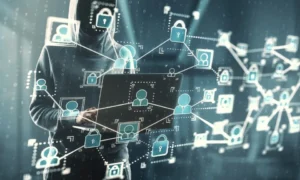By Jared Johnson, Director of Digital Strategy – Kin + Carta.
The whole world has quite literally taken one step back to take two steps forward. Whether we must click and collect or quickly disinfect anything and everything around us, contactless experiences have become commonplace, and they are here to stay.
Businesses must now adopt a people-first approach to profitability, so they have a renewed and sharpened focus on data, technology, infrastructure and customer experience (CX) in a world of change that they thought they had 10 years to adapt to, rather than one. Leaders must understand and confront a cacophony of challenges and opportunities if they are to deliver the contactless experiences upon which the economy now depends and which the people now demand.
Contactless solutions are nothing new— think key fobs and transit cards created for speed and convenience—but the safety imperative of the pandemic means that businesses now require a more thoughtful orchestration of their customer touchpoints. It’s for that reason that the likes of contactless delivery, scan-and-go commerce, and ID authentication technology, among many others, have been fast-tracked into society. The digital leaders embracing the universal need for safety are not only gaining ground, but they are cutting costs with better customer experiences, slicker supply chains, and smarter manufacturing processes.
Close encounters of the convenient kind
The best thing about the added convenience that comes with a contactless society is that it can be valuable for everybody. Let’s consider this from the brick-and-mortar perspective. Consumers benefit from not having to wait in line for anything from financial advice to fast food. They can use voice assistants and chatbots to sort their finances from a futon while they order a Whopper from Google Maps to their doorstep.
Employees benefit from not having to meet so many customers face to face or repeat themselves over the phone. Thanks to the acceleration and automation of certain processes, they can be more productive in repurposed and more rewarding roles that take their safety and well-being into account. Businesses benefit from not having to contend with lengthy lines that ultimately limit the number of transactions that can be completed in any given day.
Recognizing the need for convenient solutions that reshape physical and digital experiences is only part of the puzzle, though; the real challenge is in understanding how to action them in a way that enhances human connections. Even the best intentions of CX can come undone if operational and even emotional complexities aren’t considered.
Before convenient contactless tech is installed, store planners need to ask how they will slip seamlessly into the in-store experience. Before agile cloud and machine learning technologies are adopted, employee experience (EX) and CX managers need to understand how they will affect the productivity of a distributed workforce or the proclivity of a customer base to engage with a chatbot that asks for personal information.
Such solutions can provide stability
The prospect of a cashless society is one example of a shift that is forcing businesses into this mindset as they come to terms with a contactless economy. Some of the world’s most fervent consumers might have been reticent about it as recently as 2019, but Mastercard still reported in May 2020 that 78% of all its transactions in Europe were contactless. Alipay and WeChat Pay are growing increasingly popular for contactless payments in China, while data from Juniper Research suggests that 53% of global point-of-sale transactions will be contactless within five years.
Despite all of that, we can’t shy away from the fact that, regardless of whether people carry cash or not, the fear of coronavirus transmission has drastically affected global transactions. When we consider that the eCommerce share of global retail sales is expected to rise from 14.1% in 2019 to 22% in 2023, businesses are left with an existential quandary to solve: how do they digitally onboard everyone to make sure no one gets left behind?
Let’s keep in touch
If anything good has come out of the pandemic, it’s that the protection of our physical and mental health is much more deeply ingrained in the global conscience than it was before. This will be the beacon of hope for the contactless economy as we set about designing better experiences and building better societies for everyone, from those who are used to digital to those who are new to it. It will be especially pertinent to stay connected when social distancing is required.
Businesses that can develop the digital maturity that is required to make the world a safer place will ultimately reap the rewards that an efficient, inclusive, and sustainable digital approach can offer. Are you ready for contactless everything?



































